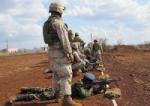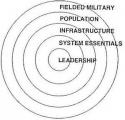Key Judgments
• The U.S.-funded program to train and equip the Afghan National Police (ANP) is generally well conceived and well executed. However, long-term U.S. assistance and funding, at least beyond 2010, is required to institutionalize the police force and establish a self-sustaining program.
• The U.S. Ambassador is responsible for policy guidance; the Commander, Combined Forces Command-Afghanistan (CFC-A) executes the police program through the Combined Security Transition Command-Afghanistan (CSTC-A). The senior embassy and military leaders have excellent relations and work together well to administer and improve the police program.
• Building the Afghan National Police (ANP) requires a comprehensive, integrated approach that encompasses leadership training, sustaining institutions and organizations, and oversight and internal control mechanisms. As it has rapidly evolved, police readiness requirements have expanded beyond training to include sweeping institutional reform of the ANP through the Ministry of Interior.
• Nevertheless, ANP’s readiness level to carry out its internal security and conventional police responsibilities is far from adequate. The obstacles to establish a fully professional ANP are formidable. Among them are: no effective field training officer (FTO) program, illiterate recruits, a history of low pay and pervasive corruption, and an insecure environment.
• The mentoring program is a key component to effect institutional change and build a capable, self-sustaining national police force. To reach its full potential, the mentoring program should be expanded and better managed to achieve program objectives.
• Management of the police training contract is problematic and requires more effective coordination between State Department contract managers and CSTC-A, which is responsible for executing ANP training programs.
• The procurement pipeline to Afghanistan for ANP equipment is slow, but is improving. There is inadequate accountability for equipment after it is turned over to the ANP, because the ANP logistics system is not yet effective. The ANP needs to establish and implement an effective end-to-end internal controls process.
• Until the Afghan criminal justice system, including law enforcement, judiciary, and corrections, has matured and is synchronized and coordinated from the national to the local level such that laws are standardized and uniformly applied, the ANP will function more as a security force than as a law enforcement organization.
• The U.S. and international effort for standing up the ANP is not limitless; therefore, transitioning full responsibility and authority to the MoI needs greater emphasis.
• Building an effective ANP program will require a long-term commitment from coalition and international partners. Premature withdrawal from this commitment will compromise the progress already accomplished and put at risk the U.S. goal to establish a professional police force embracing the values and practices of community policing and the rule of law.












Bookmarks